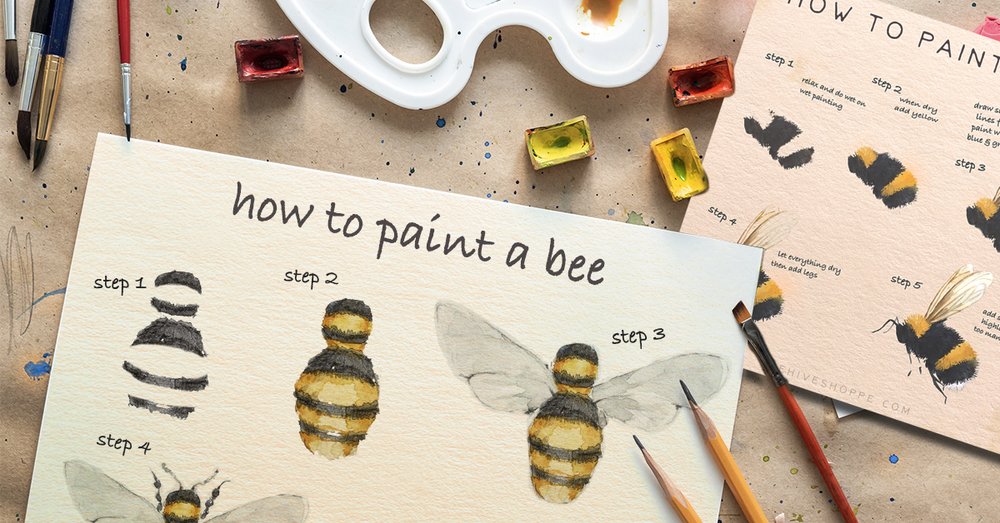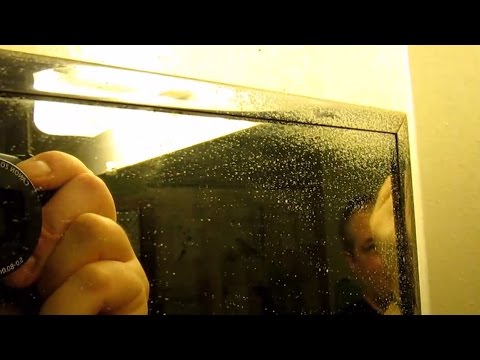Painting a bumblebee can be a delightful and rewarding project for artists of all skill levels.
To paint a bumblebee, start with a light pencil sketch, add base colors with yellow and black, and then detail the wings and body with fine brush strokes.
From sketching the initial outline to adding the final details, you’ll learn how to create a beautiful bumblebee painting.
Gather your materials, follow along, and enjoy the creative journey!

Materials You’ll Need
Before you begin, gather these materials:
- Paper or Canvas: Thick paper or a small canvas works best.
- Pencil and Eraser: For sketching your bumblebee.
- Paints: Watercolors, acrylics, or even colored pencils will work.
- Paintbrushes: Various sizes for different details.
- Palette: To mix your paints.
- Cup of Water: For cleaning your brushes if you’re using watercolors or acrylics.
- Paper Towels: For blotting your brushes and cleaning up.
Step-by-Step Guide
1. Sketching the Bumblebee
Start with a light pencil sketch of the bumblebee. Follow these simple steps:
- Head and Body: Draw an oval for the head and a larger oval for the body, slightly overlapping each other. This forms the basic structure of your bumblebee.
- Wings: Sketch two pairs of wings. The upper wings are larger and the lower wings are smaller. Think of them as slightly rounded triangles attached to the back of the bumblebee.
- Legs and Antennae: Add six legs and two antennae to your sketch. The legs should be jointed and come from the sides of the body, while the antennae should curve gently from the head.
Make sure your sketch is light, so it doesn’t show through your paint. You can always erase and refine your lines as needed.

2. Painting the Base Colors
Now, let’s add some color to your sketch:
- Yellow Stripes: Paint the bumblebee’s body with yellow and black stripes. Start with a light wash of yellow for the stripes. This will create a bright base that you can build upon. Use a medium-sized brush to apply the yellow paint, making sure to follow the natural contours of the body.
- Black Areas: Add black to the head, antennae, and the rest of the stripes on the body. Black should also be used to outline the segments of the bumblebee’s body to give its definition. Be careful to avoid painting over the yellow areas. If you’re using watercolors, you might want to mix a tiny bit of water with the black paint to keep it from being too dark.
- Wings: Use a light blue or gray for the wings, adding a touch of white to give them a translucent look. Start with a very light wash and gradually build up the color. You can use a fine brush to add a little bit of white to the edges of the wings to make them look shiny and delicate.
3. Adding Details
With the base colors in place, it’s time to add details to bring your bumblebee to life:
- Eyes: Paint the eyes using black, adding a small white dot for the highlight. This little touch makes the eyes look shiny and more realistic. The highlight should be placed where the light would naturally hit the eyes.
- Legs: Add details to the legs, using dark brown or black, and highlight the joints. Make sure each segment of the leg is clearly defined. You can also add tiny hairs to the legs using quick, light brush strokes.
- Wing Veins: Use a fine brush to add delicate lines to the wings, giving them a realistic appearance. The veins should be darker than the wing itself, but not too stark. A slightly darker blue or gray will work well.

4. Enhancing with Shadows and Highlights
To give your painting depth and dimension, add shadows and highlights:
- Shadows: Apply a darker shade of yellow or black to areas that would naturally be in shadow, like under the wings and around the legs. This will make your bumblebee look more three-dimensional. Use a light touch and blend the edges of the shadows into the surrounding colors.
- Highlights: Use a small amount of white or a lighter shade of yellow to highlight areas that catch the light, like the top of the body and wings. Highlights should be placed where the light source hits the bumblebee directly. This will give the painting a realistic glow and make the bumblebee appear more vibrant.
5. Final Touches
Finish your painting with these final touches:
- Background: Consider adding a simple background, such as a light blue sky or a flower, to make your bumblebee stand out. A soft gradient from blue to white can create a nice, airy background that doesn’t distract from the main subject. If you choose to add flowers, keep them simple so they complement rather than overshadow your bumblebee.
Details: Add any extra details you feel necessary to complete your painting, like extra texture on the wings or body. You might want to add tiny pollen grains on the bumblebee’s legs or subtle lines on the wings to indicate texture.
Draw and paint a Bumble Bee with acrylics
Tips and Tricks
- Practice: Don’t worry if your first attempt isn’t perfect. Painting takes practice, so keep experimenting with different techniques. Try different types of paper or canvas to see what works best for you.
- Reference Images: Use reference images of real bumblebees to help guide your painting. This will give you a better understanding of their colors and anatomy. Look closely at the way light and shadow play on their bodies and wings.
- Layering: When using watercolors, remember to let each layer dry before adding the next. This prevents colors from blending unintentionally. If you’re using acrylics, you can build up texture by applying thicker layers of paint.
- Brush Care: Keep your brushes clean by rinsing them often and drying them with paper towels. This helps maintain their shape and longevity. Use different brushes for different parts of your painting to avoid cross-contamination of colors.
Troubleshooting Common Issues
- Colors Bleeding: If your colors are bleeding into each other, make sure each layer is completely dry before adding more paint. You can also use a hairdryer to speed up the drying process.
- Uneven Lines: Use a fine brush for detailed work and practice steadying your hand to achieve clean lines. If your hand is shaky, try resting your elbow on the table for more stability.
- Overworked Areas: If an area looks overworked, let it dry completely before gently layering more paint over it to correct any mistakes. Sometimes stepping away from your painting for a while can give you a fresh perspective when you return.
Conclusion
Painting a bumblebee is a fun and rewarding activity that allows you to explore your creativity while learning new techniques. By following this guide, you’ll be able to create a beautiful and realistic bumblebee painting.
Painting is a wonderful way to relax and express yourself. Whether you’re painting alone or with friends, the joy of creating something beautiful is always worth the effort. Keep practicing, and soon you’ll see your skills improve and your confidence grow.
So grab your paints and brushes, find a cozy spot to work, and start painting your very own bumblebee masterpiece. Enjoy the journey of creating art, and let your imagination take flight just like a bumblebee in a field of flowers.
